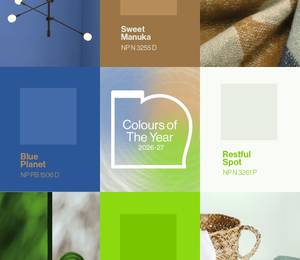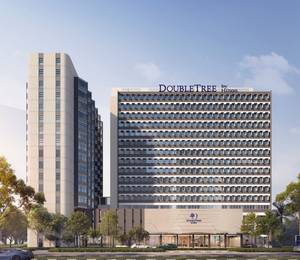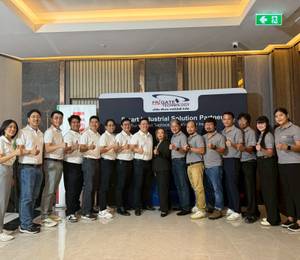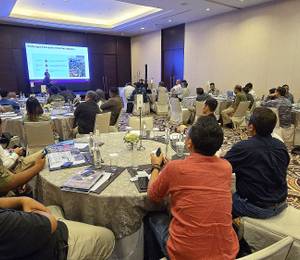The United World College of Southeast Asia (UWCSEA), an independent international school in Singapore, has designed, retrofitted and managed its two campuses in Tampines and Dover to make them sustainable. In this interview, Carma Elliot, College President, shares her thoughts about the practical steps to update old buildings for the future with SEAB.
SEAB: Could you share a little bit about your role at UWCSEA?
CARMA: As the College President, my role is equivalent to that of a CEO. I lead the College furthering the College’s role as a leader in international education, with a focus on our mission of education as a force to build peaceful and sustainable futures.
As we celebrate 50 years since our opening in 1971 by then Singapore Prime Minister Lee Kuan Yew, my main goal is to stretch the College’s positive contribution towards creating more sustainable futures. That means making sure that learning about environmental sustainability doesn’t end in the classroom and that the College’s campuses become a living part of our education, where everything from the buildings themselves to how we design, light, cool and resource them, how we landscape them and make decisions about how we manage them is in keeping with our mission.
SEAB: Could you tell us about the refit that the Dover Campus finished in 2016?
CARMA: For two decades, the concept of environmental sustainability has been embedded in the UWC philosophy, and we have partnered with many local institutions and NGOs to work together on how we push this message. Over time, we have come to appreciate that engaging the young in sustainability cannot be just about theory – we need to embed sustainability in every part of college life across our two campuses.
A multi-year, multi-million dollar rejuvenation and refit of the Dover Campus was completed in 2016. It included implementation of recycled water strategies, a retrofit of the chiller plant to make our air conditioning energy-saving and efficient, the extension of an existing tree nursery that is managed in conjunction with Singapore Botanic Gardens, and a rethinking of food waste management to recycle oil and turn fruit and vegetable waste into compost that is used to fertilise the trees and gardens.
Renewable energies are a big part of our futures planning. Our Dover Campus has installed over 1,500 solar panels to date, which together generate approximately 500,000 Kilowatt Hours of electricity per year, or enough to power 125 four-room HDB housing units for a year.
This brought the Dover Campus into line with East Campus, which opened in 2008 after being designed as a showcase for sustainability from the start. The facility has solar-powered energy efficient water and air conditioning systems, and uses architectural solutions like wind funnelling and sun shading to assist with these efficiencies. It is also equipped with extensive green learning spaces which support student learning, such as composting, which even the youngest students use. In a student-led initiative, East Campus students have successfully launched an initiative to extend the existing solar array to help provide a clean source of energy for the College and reduce carbon emissions.
SEAB: How did it benefit the two campuses?
CARMA: The Dover campus which we retrofitted, has allowed the College to reduce overall energy consumption. It has also allowed us to integrate solar panels, cooling roofs and green walls, retrofit the existing chiller plant to use innovative energy-saving technology and implement recycled water strategies. For Solar at Dover, we also have a live statistics page to show the solar panels’ savings. This year, we offset 120,228kg of coal, and the solar panels also helped power 111 classrooms. The total installed capacity of 153.2kWp is capable of producing 158,962kWh of electricity annually. This replaces up to 3.04 percent of the school’s annual electricity consumption of 5,225,686kWh, a saving of 79.5 tonnes of CO2 emissions.
The school’s future plan for renewable energy includes the installation of an additional 148.7kWp of solar PV systems to make up a total capacity of 302.2kWp, with an estimated generation capacity of 311.7kWh annually for replacement of up to 6 percent of the school’s annual electricity consumption (or estimated savings of more than 150 tonnes of CO2 emission annually).
Integrating such technology and spaces into the campus not only allows us to conserve energy and have a low environmental footprint, but it also acts as a real-life example of sustainability in action and can bring classroom learning to life across the two campuses.
SEAB: Considering that the buildings were old at the time of refit, what challenges did the Dover Campus design team face?
CARMA: The Dover Campus, parts of which date back to the 1960s, was not originally designed with sustainability top of mind. We had to relook at how the school was designed. This was not just about adding solar panels on the roof, it was about creating a system of the entire design of the building in relation to the environment with the goal of resource need first and resource use second.
As you can imagine, trying to bring these goals in line with modern functionality was not easy. New and additional technology need space that is scarce in buildings not designed for energy-efficiency. For example, getting a new air conditioning unit fitted into an old envelope of space often involves creative use of space. It means maintaining the existing functionality while converting the spaces, while also minimising disruption to the operations of the school.
Another challenge we have to address is the upgrade and re-location of the ‘heart and lungs’ of Dover, the chiller plant. Chillers are considered to be amongst the most complex and energy-intensive pieces of equipment in institutional facilities. Hence, you can imagine the complexity of moving an entire chiller plant. The move and a retrofit were a step in keeping with the overall principle of reduce, reuse, recycle, and these have brought about an efficiency improvement of 40% (for the engineers out there, improving from 1.05 kW/RT to <0.60 kW/RT).
SEAB: Were any innovative design methods introduced during the refit?
CARMA: One of the innovative design methods was to use natural light through sunshades and light shelves to bounce natural daylight into the classrooms to reduce the need for artificial lighting. The exam hall was designed with a light-reflecting acoustic ceiling that can be used without any artificial light. Roof-top solar tubes are installed to provide sunlight to deep interior spaces; even the ceiling fans are designed to ensure circulation of the cooled air in an energy-efficient manner. This was achieved by ensuring the orientation of the buildings meant that the windows of those rooms with air conditioning faced the north-south direction to reduce heat gain.
Another example is the 3for2 project – essentially, the construction of three floors in the conventional space of two without impacting optimum floor-to-ceiling heights. This experimental construction on Dover Campus has borne out the theory, and increases the overall energy efficiency of the building by a factor of two. This design also results in energy savings and noise reduction in occupant space as well as giving the potential to allow a reduction in the overall height of the building through the elimination of ceiling incorporated infrastructure.
At Dover, we also tried to create a way to lower the temperature of the building without using so much energy. During rainy days, thermal loading resulting from fenestration systems reduces significantly. This results in a more rapid heat removal process. Sometimes this results in feedback from occupants that they feel “colder” in the office or classroom.. The campus implemented a solution to automatically reduce the supply air setpoint during rainy days. This gives two benefits: (1) maintaining reasonable thermal comfort during raining and (2) reducing energy demand by reducing chilled water supply temperature setpoint.
SEAB: Have the two campuses won any awards as a result of this sustainable refit?
CARMA: In recognition of UWCSEA’s leadership in designing and retrofitting environmentally sustainable campuses, the Dover and Tampines sites were awarded Green Mark Platinum Super Low Energy certification from the Singapore Building and Construction Authority in December 2020, the only international school in Singapore to have received this recognition.
Both campuses received the award for the entire site, rather than for an individual building–a remarkable achievement and testament to the College’s commitment to put the mission into practice in operations and education. The award demonstrated that buildings can be retrofitted and then managed in line with green buildings to the highest standards of sustainable building practices.
In addition to the recognition of efficient building management practices given by the Super Low Energy designation, UWCSEA’s East is also one of very few buildings in Singapore that has been re-awarded Green Mark Platinum for more than ten years. It has been recognised for work across the building life cycle, from planning and design, through construction and opening, to the campus’s energy efficient operation and maintenance. It is also a testament that it is possible to not only retrofit legacy buildings but operate them at industry-leading standards of efficiency.
More recently, our East Campus has also again been awarded the Platinum (with Diamond) award from NParks Community in Bloom for our landscape standard for educational institutions. This is the highest award possible, with the assessment criteria including not just garden quality, but also landscaping and sustainability efforts – a wonderful testament to the efforts of the East Campus community to greening a high-density site in such a short time.
UWCSEA’s commitment to environmental sustainability is also in line with the five pillars of Singapore’s Green Plan 2030, and we will continue to strive for a green and sustainable future for the generations to come.

















